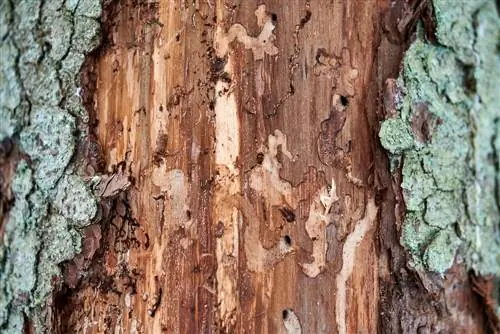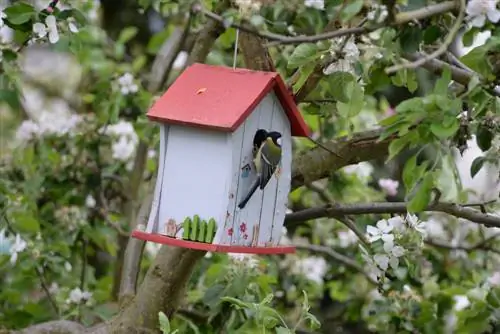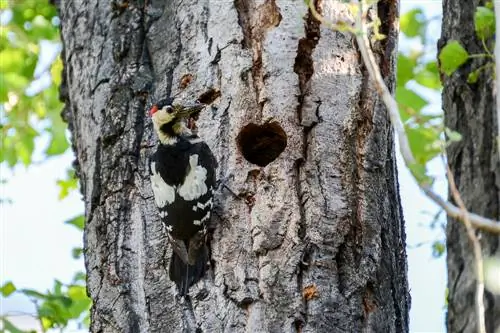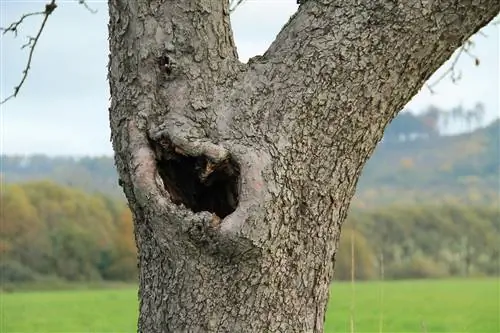- Author admin [email protected].
- Public 2023-12-16 16:46.
- Last modified 2025-01-23 11:22.
A hole in the tree trunk sets off alarm bells. Read useful information here to help you find the culprit. These common pests reveal their presence through drill holes in the tree trunk.
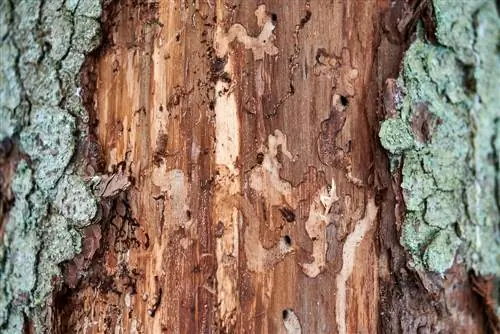
Which pest causes holes in tree trunks?
Hole in the tree trunk is usually caused by bark beetles or wood borers. They eat circular holes for mating, egg laying and brood care, which severely damages the tree and can lead to death.
Which pest makes a hole in a tree trunk?
Thebark beetle (Scolytinae) is the most common pest that causes a hole in the tree trunk. The species-rich bark beetle family includes feared species such as book printers, copperplate engravers, pine bark beetles, forest gardeners and fruit tree bark beetles. The beetles are brown-black and 1 mm to 6 mm in size.
A second pest comes from the order of butterflies that makes itself unpopular by making holes in the tree trunk. It is the family ofwood borers (Cossidae) with well-known species such as willow borers (Cossus cossus) and unequal wood borers (Xyleborus dispar).
How does the pest cause the hole in the tree trunk?
During mating season, bark beetles and wood borers eat circular holes in the tree trunk. First, the drill hole runs horizontally to the bark and serves as arammel chamberfor mating. Mated females drill vertical side passages for laying eggs and caring for the brood. Voracious larvae eat their way through the infected tree trunk for weeks. After three to five larval stages, the young beetles or butterfly caterpillars eat their way up to anexit hole in the tree bark.
How harmful are holes in tree trunks?
In the course of mating, laying eggs, ripening and the next generation's excursion, countless holes appear in the tree trunk, whichseverely damage the treeAs so-called weakness parasites, the pests primarily attack weakened trees. The conifers and deciduous trees have no resistance to the infestation and die. A bark beetle infestation can be recognized by these symptoms:
- 1-3 mm circular holes in the bark.
- Pile of sawdust on tree trunk.
- Numerous drops of resin on the bark.
- Elongated mother ducts and feeding ducts branching off from them appear under the lifted bark.
Tip
Is bark beetle infestation required to be reported?
An infestation with bark beetles does not have to be reported in Germany. In view of the serious potential for damage, experts still recommend contacting the public order office or the lower nature conservation authority. In an exchange with experienced experts, you will receive valuable help in effectively combating book printers and the like in your own garden.

